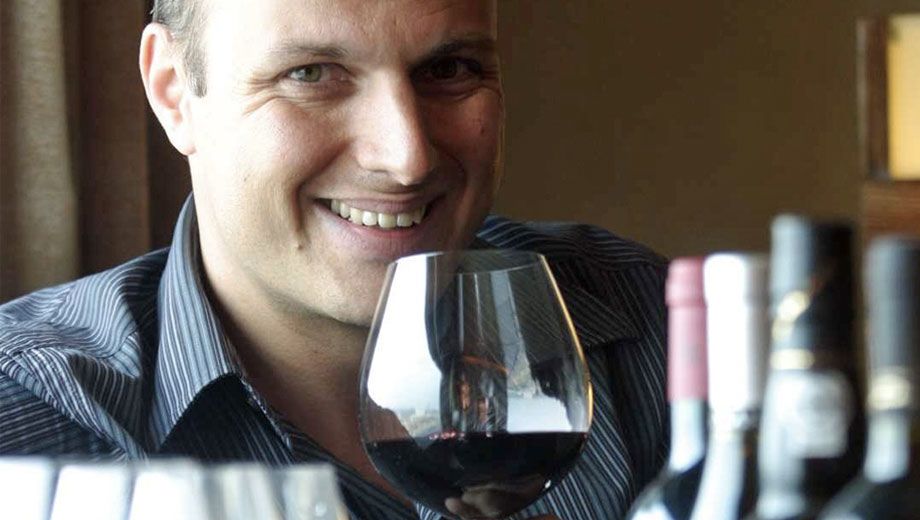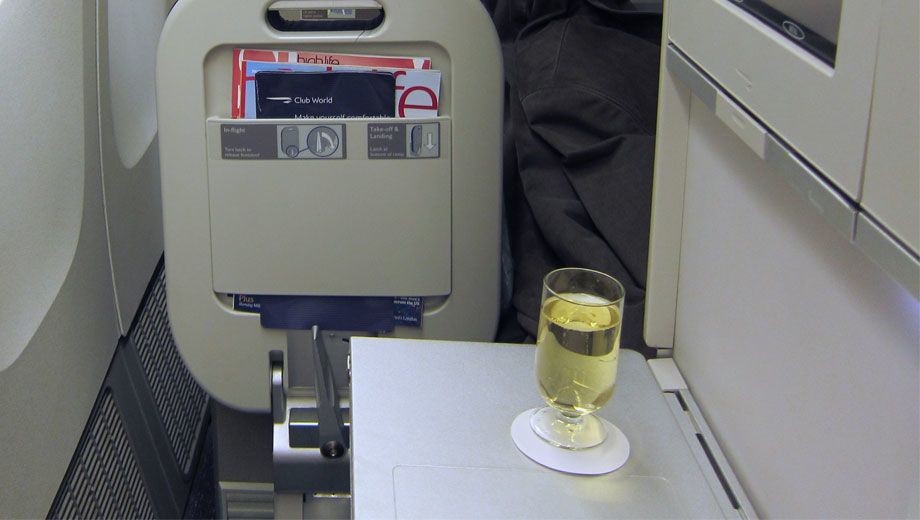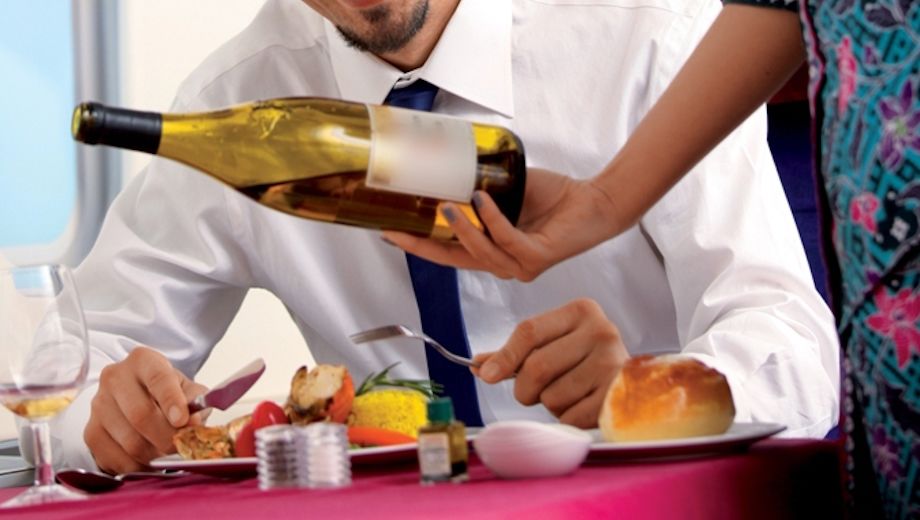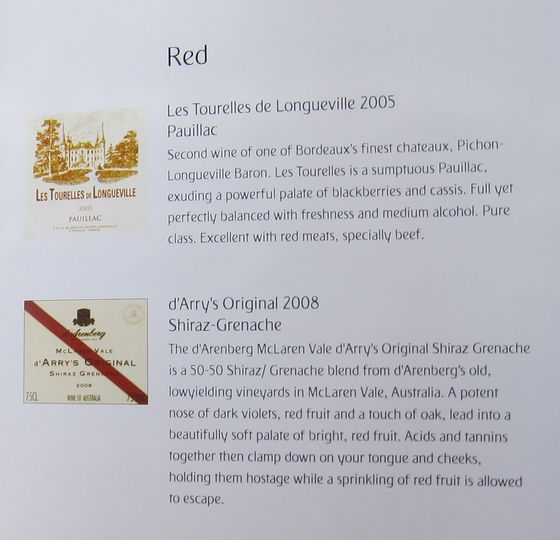Wine expert's advice: what's the best drop to drink when you fly?

Matching wine to food can be tricky on the ground -- let alone 30,000 feet up, with air so dry that the wine's taste and character change completely.
So how do airlines pick wines that work well with food, especially given the international, multicultural population of business travellers? Australian Business Traveller sat down with Dr Ron Georgiou, Master of Wine and wine consultant for Malaysia Airlines, to learn more.
We started out -- as many people do when sitting down in business class -- with champagne, and asked why the bubbly stuff tastes so different on the ground and in the air. Georgiou points out that it's as much due to temperature as it is to altitude and the pressurised cabin.
"Consistently, that first glass of champagne is always too warm. So the wine ends up tasting fatter and broader. That's fine if you've got a wine that's high-acid to start with, but if you've got a nice big "fatty", like a Bollinger or something like that, it can taste pretty big and mushroomy, and almost a bit unpleasant if it's not at the right temperature," Georgiou says.

He suggests a simple test to show the difference: "If I gave you a glass of champagne at fifteen degrees and a glass of champagne at seven degrees, both on the ground and in the air, you would see a very big difference just based in temperature."
"Of course, by the time you've got that second glass an hour later, it's at the right temperature and a lot colder."
Georgiou explains that the bubbles that give champagne its fizz are created for a sea-level drinking experience, so things change in the air. "It makes common sense that in the pressurised cabin, the bubbles aren't going to last as long. That's what you tend to find: the bubbles disappear quite quickly."
White wine

When it comes to whites, Georgiou has some particular recommendations: "Generally, the rounder, more aromatic types. Chardonnay does particularly well. Mildly oaked Chardonnay would look pretty nice in flight."
He also has some big no-nos in the air. (Fellow wine fans: do you agree?)
"What wouldn't necessarily work as well is a lean, green Sauvignon Blanc. As you know, with Sauvignon Blancs you get the lovely gooseberry aromatics out of Marlborough, but quite a lot of other examples are very green asparagus, very herbaceous," Georgious points out.
"That extreme herbaceous quality, I think, translates badly in the air. So Sauvignon Blanc has to be along that passionfruit-gooseberry spectrum rather than that extremely tight green spectrum, for me."
Away from the Chard/Sav choice, Georgiou has praise for the less internationally well-known varietals.
"Riesling, I think, is a very good choice. I'd love to see aged Semillon on board a flight, but I don't think it will ever happen because people don't really understand it. It's lower in alcohol and it develops these toasty secondary characteristics, and that could be really interesting."
Red wine

And if you want a red?
"In the reds, I think something fleshier, so Merlot-based, or a Grenache-Syrah-Mourvèdre -- the Côtes du Rhône sort of mix. I think the fleshiness of Grenache and the ripeness of Shiraz works quite well."
Georgiou recommends caution with Pinot Noir or Cabernet-dominant blends:
"Pinot Noir is fine, as long as you choose something with some ripeness. I think Pinot that's fairly lean to start with would be a disaster in flight. I look at some of the Pinots that are being served with great interest, because I've tasted some great labels in the air, even Grands Crus, and the wines tasted appallingly bad."
"Hard Cabernet doesn't work very well, so when you choose your Bordeaux you need to choose something that's been fleshed out with a little bit of Merlot, rather than high in Cabernet," Georgiou suggests.
If you're a big fan of Bordeaux reds (and you're flying with a top-notch business class or first class wine list), Georgiou has village-by-village recommendations.
"Obviously when you're getting down to the specifics of, say, Bordeaux, you'd tend to choose Saint-Julien over Saint-Estephe, because you want something a little bit softer and rounder, or a Margaux or Pauillac over Saint-Estephe."
Australian Business Traveller's top tip (which gained the Dr Ron Georgiou seal of approval) for drinking red on a plane is to check that it's not too cold. We have a glass poured for dinner when the drinks trolley first comes round so that the wine has a chance to warm up to the right temperature.
If you enjoy shopping for wine when you travel, so you can bring back a few bottles of the best for yourself of friends, read our tips for the safest and smartest ways to pack wine in your luggage.
Fellow wine fans: what do you think of Dr Ron's recommendations? What's the best drop you've had in the air recently? And if you're thirsty for more of Australian Business Traveller's Food Week articles, you'll find them all this week at ausbt.com.au -- and keep an eye on our @AusBT Twitter account for the very latest.
03 Feb 2012
Total posts 4
Would be intrigued as to his dessert wine suggestions. Personally I find there's nothing more pleasant than a plate of nice cheese and a decent sticky at the end of a nice meal. The Forrest Estate noble riesling that AirNZ serve for example is very nice in my opinion. Have also had some fairly poor dessert wines over the years as well.
30 Jan 2012
Total posts 1
Hi Chris, A perfect choice.. the fine balance between sweetness and high acidity works well inflight, so late harvest Riesling in a perfect choice. German sweet wines from top producers, particularly those at Spatlese and Auslese levels of sweetness also would work well, especially from the Mosel in Germany, as the 7.5% alcohol levels also help to keep the experience pleasant inflight where dehydration is a real issue. Cheers Ron
24 Oct 2010
Total posts 2554
I've sort of lost faith in finding a nice red to enjoy at altitude, but will be guided by these suggestions nexty time I fly. As for dessert wines, I have such a weak spot for Noble One etc, that never fails to work at 30,000 feet!
03 Jan 2011
Total posts 665
Dr Ron's recs are spot on -- look for a blended GSM (Grenache, Syrah, Mourvèdre) that's big and fruity enough to mask the enhanced tannins in the sky. Warm climate reds will generally be good too.
Hi Guest, join in the discussion on Wine expert's advice: what's the best drop to drink when you fly?